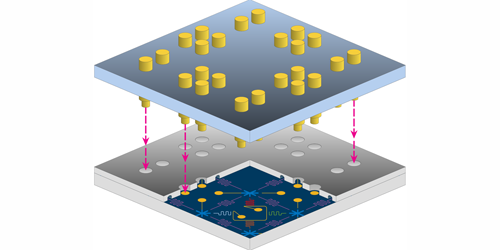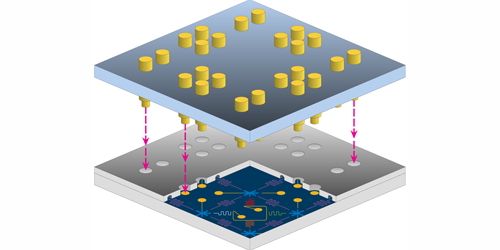Scaling-Up with a Quantum Socket
To build a quantum computer that outperforms a classical supercomputer, researchers need to assemble qubits into complex architectures. But at present it is unclear how to wire together large numbers of qubits in a way that allows the reliable control and transfer of quantum information. Now, Matteo Mariantoni at the Institute for Quantum Computing in Waterloo, Canada, and co-workers have designed a “quantum socket”—an electrical interconnector suitable for slotting together large sets of superconducting qubits.
The group’s quantum socket is a three-dimensional arrangement of microwires that could provide electrical access to a two-dimensional array of superconducting qubits microfabricated on a chip. Guided by numerical simulations, the authors optimized the electrical, thermal, mechanical, and magnetic properties of the socket and carried out an extensive experimental characterization. Their results show that the socket reliably transmits the signals needed to operate a qubit array: the dc currents that tune the transition frequency of the two qubit levels, the microwave pulses that control the qubit states, and the microwave signals used to read out such states. The device operates efficiently at the cryogenic temperatures and high (about 10 GHz) frequencies needed for a superconducting quantum computer.
The quantum socket could be used to realize a “super qubit”—an assembly of a few hundred qubits that works as a single logical qubit but with an error rate 1 order of magnitude lower than that of the individual qubits. The researchers also envision that their socket could be scaled up to connect qubits, which could then be used to solve quantum chemistry problems that are hard to tackle with classical computers.
This research was published in Physical Review Applied.
–Matteo Rini
Matteo Rini is the Deputy Editor of Physics.





